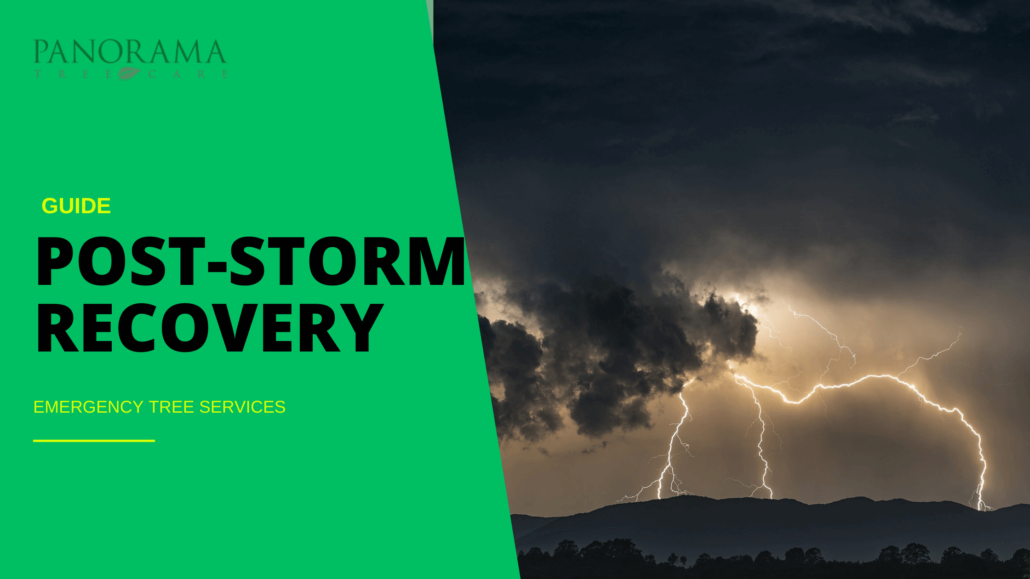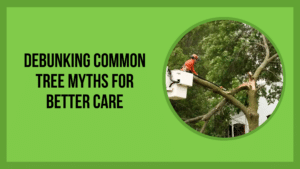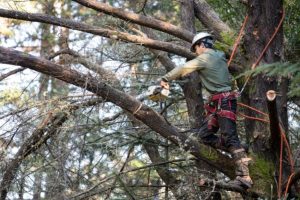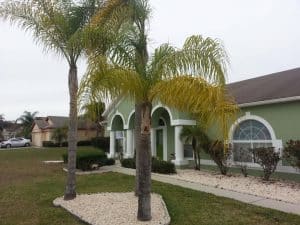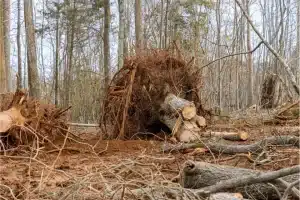Storms can wreak havoc on trees, especially in Florida where hurricanes and severe weather are common. When a storm hits, the damage to trees can be significant, posing risks to your property and safety.
This is where professional tree services or any other city become essential. They help manage the aftermath of severe weather, ensuring safety and restoring the beauty of your landscape.
This guide explores the essential role of expert tree care in post-storm recovery and how Panorama Tree Care stands ready to assist local residents.
Immediate Post-Storm Tree Assessment
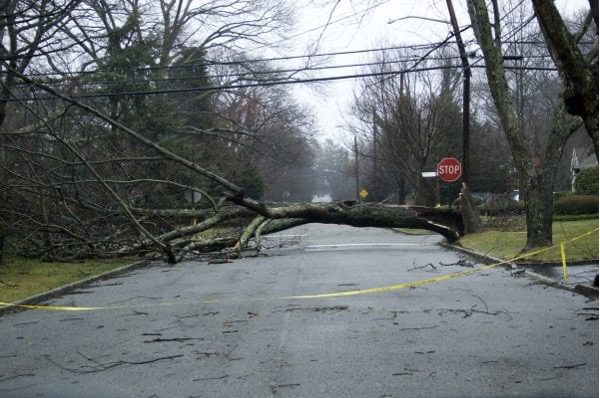
After a storm, the first thing you need to do is assess the damage to your trees. This step is crucial to ensure the safety of your property and loved ones.
Safety Considerations
Your safety is the most important thing. Storm-damaged trees can be very dangerous, with broken branches or entire trees at risk of falling.
Stay away from trees that look unstable, have hanging branches, or are leaning precariously.
It’s best to leave the assessment to professionals who have the right equipment and expertise to handle hazardous situations.
Identifying Hazardous Trees and Branches
Identifying which trees and branches are dangerous is a key part of the assessment. Here are some signs to look for:
- Leaning Trees: If a tree is suddenly leaning, it could be a sign that the roots have been compromised. This makes the tree more likely to fall.
- Split Trunks: A tree with a split trunk is structurally weak and poses a significant hazard.
- Broken Branches: Large branches that are broken but still attached can fall at any time, especially if they are high up.
- Cracks in the Bark: Deep cracks in the bark or trunk can indicate serious internal damage.
- Uprooted Trees: Trees that have been partially or completely uprooted are very unstable.
Documenting Damage for Insurance Purposes
After identifying hazardous trees and branches, it’s important to document the damage for insurance purposes. Here’s how to do it:
- Take Photos: Use a camera or smartphone to take clear, detailed photos of the damage. Capture different angles and include close-ups of the specific issues like cracks, splits, and uprooted roots.
- Write Notes: Keep a detailed record of what you observe. Note the date and time of the assessment, the types of damage, and any immediate risks.
- Get Professional Reports: Having a professional tree service like Panorama Tree Care, provide an assessment report can strengthen your insurance claim. Professionals can offer a more precise evaluation of the damage and the necessary steps for repair or removal.
Emergency Tree Removal Services
In the aftermath of a storm, some trees may be so badly damaged that they need to be removed immediately.
When Removal is Necessary
Severe Damage: Trees that have sustained severe damage may not be safe to keep around. This includes trees that have large broken branches, significant trunk cracks, or have been partially uprooted. Such damage compromises the structural integrity of the tree, making it a hazard.
Immediate Threats: Trees that pose an immediate threat to people, homes, or infrastructure need to be removed quickly.
These are trees that are leaning dangerously over buildings, power lines, or heavily trafficked areas. If left unattended, these trees can cause serious injuries or damage.
Our post-storm tree removal Tampa experts are trained to safely remove hazardous trees and reduce risk to your home and landscape.
Process of Safe Tree Removal in Storm-Damaged Areas
Removing a storm-damaged tree is a complex task that requires careful planning and execution to ensure safety and efficiency. Here’s how professionals like us handle it:
Assessment and Planning: Before any action is taken, we perform a thorough assessment of the tree and the surrounding area. Then we determine the extent of the damage and the best way to approach the removal. This involves considering factors like the tree’s size, location, and proximity to structures.
Safety Precautions: Safety is paramount. We use personal protective equipment (PPE) such as helmets, gloves, and harnesses. We also set up barriers to keep bystanders at a safe distance.
Use of Specialized Equipment:
- Chainsaws: These are used to cut through branches and trunks. Chainsaws come in various sizes, and professionals choose the appropriate size based on the thickness of the wood.
- Cranes: In cases where the tree is very large or in a difficult-to-reach location, cranes may be used. Cranes help to lift and lower large sections of the tree safely.
- Wood Chippers: After the tree is cut down, wood chippers are used to break down branches and smaller sections of the trunk into mulch. This makes disposal easier and more efficient.
Step-by-Step Removal:
- Limb Removal: The first step is usually to remove the branches, starting from the top. This makes the tree lighter and easier to manage. It also reduces the risk of branches falling unpredictably.
- Sectioning the Trunk: Once the branches are removed, the trunk is cut into manageable sections. Depending on the size of the tree, this might involve cutting it down in several stages.
- Stump Removal: Finally, the stump is removed. This can be done using stump grinders or by digging it out, depending on the size and type of the tree.
Equipment Used for Emergency Tree Removal
The equipment used in tree removal is specialized to handle the specific challenges posed by storm-damaged trees:
- Chainsaws: Essential for cutting through the wood efficiently. They come in various sizes, with larger ones used for thick trunks and smaller ones for branches.
- Cranes and Bucket Trucks: Used to reach high branches and to safely lower large sections of the tree to the ground.
- Wood Chippers: Convert branches and smaller pieces of wood into mulch, making disposal easier.
- Stump Grinders: Used to grind down the tree stump, removing it completely from the ground.
Clearing Fallen Trees and Debris
Quick removal of fallen trees and debris is crucial. This not only restores the appearance of your property but also prevents potential hazards.
Our post-storm tree cleanup Tampa team responds fast with heavy-duty equipment to ensure your yard is safe, clean, and storm-ready.
Efficient cleanup methods include using heavy-duty equipment to move large debris and chipper machines to turn branches into mulch.
Proper disposal and recycling of storm debris are important. Many tree service companies ensure that debris is handled in an environmentally friendly manner.
Tree Damage Repair and Restoration
Not all storm-damaged trees need to be removed. Some can be salvaged with proper care.
Assessing which trees can be saved involves looking at the extent of the damage. Pruning and trimming damaged limbs help promote recovery.
Techniques like cabling and bracing provide additional support to weakened trees. With the right care, many trees can recover and thrive again.
Preventing Future Storm Damage
Preventing future storm damage starts with regular tree maintenance. Regular pruning and trimming keep trees healthy and reduce the risk of branches breaking during storms.
Identifying and addressing vulnerable trees, such as those with structural weaknesses, is essential.
Implementing storm-resistant landscaping strategies, like planting wind-resistant tree species and ensuring proper spacing, can also make a big difference.
Tree Services Offered by Panorama Tree Care
Panorama Tree Care offers a range of tree services like emergency tree services and more to help you manage and recover from storm damage:
- 24/7 emergency response: We’re available around the clock to address urgent tree issues.
- Comprehensive storm damage assessment: Our experts evaluate the extent of damage and recommend the best course of action.
- Professional tree removal and debris clearing: We safely remove hazardous trees and clear debris efficiently.
- Expert tree care and maintenance: Our team provides ongoing care to keep your trees healthy and resilient.
Preparing for Future Storms
Preparation is key to minimizing storm damage. Creating a storm preparedness plan for your trees involves regular inspections and maintenance.
Seasonal tree care enhances resilience, ensuring that trees are in their best shape before a storm hits.
Working with arborists for long-term tree health provides expert guidance and care, making your landscape more robust against severe weather.
Conclusion
Professional tree services play a critical role in managing the aftermath of storms. They ensure safety, restore your property’s beauty, and help trees recover.
By being proactive with tree care and maintenance, you can reduce the risk of storm damage. If you need assistance, contact Panorama Tree Care.
Recovering from storm damage or preparing for hurricane season? Book your emergency tree assessment now and let our certified Tampa arborists protect what matters most.

